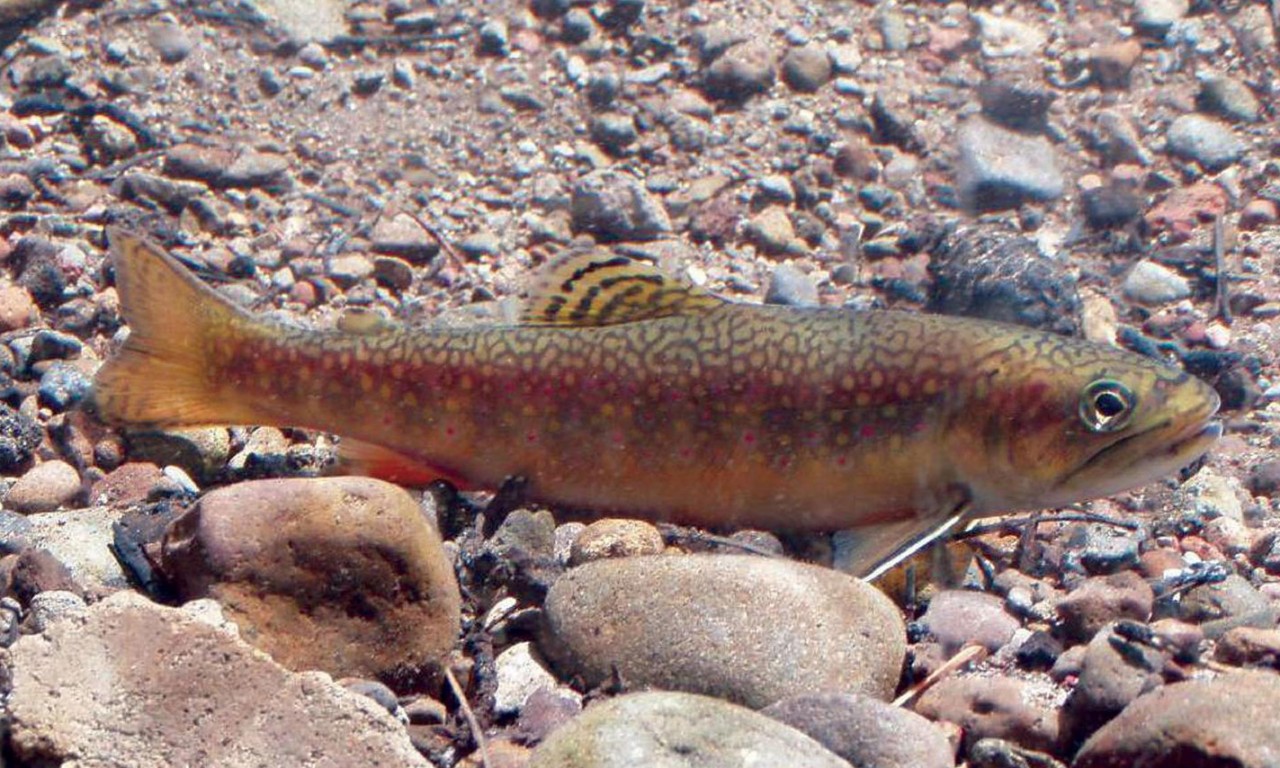I looked upstream. Boulder Canyon banked left and the road, the river, and the canyon walls vanished beyond the bend. A white ash loomed over my head. The tree seemed to be watching me as I cast upstream to a pool of rising trout. The water was a cool blue-green, reflecting pine trees and a perfectly blue sky. As I cast, my fly line rolled out in lazy loops over the gurgling water. With one final forward flick, I let the line drop from the sky.
My fly was a carefully woven bundle of feather and thread. And it now lay on the water’s surface. In the blink of a moment it had disappeared. Where the fly had been, water swirled and splashed. Tensely, I pulled the line and set the hook. From under the water a golden token flashed, like buried treasure caught briefly in the light of the sun. The fish I pulled to the surface danced on the water, tail flailing, before I scooped it up with one gentle hand. I had never seen a trout so beautiful. Its belly was a thick golden ribbon, rich, and dripping with color. It looked like molten gold, yet cool to the touch. Along its back there were crimson dots with white haloes like little planets.
Not Native, but Thriving
This was a brook trout that I caught on Boulder Creek in October of last year. Brook trout are native to much of the eastern United States, but they weren’t introduced to Boulder County until some time in the 19th century. While rainbow and brown trout can live in low altitude habitats, brook trout require high altitudes to survive. At low altitudes, water
temperatures become too warm in the summer for brook trout to thrive. So Colorado is the perfect habitat for this illustrious fish. Brook trout feed on a number of water-dwelling invertebrates including caddisflies and stoneflies. During the summer and fall when these bugs emerge from the water, trout eat them off of the surface. Brook trout spawn in the fall and can travel miles to spawning locations.
Colorful Attraction
During spawning, the males turn truly fantastic colors: crimson, gold, tangerine, olive, and white. This coloration, no doubt, attracts female brook trout and fisherman alike. Brook trout usually live to four or five years of age, but in colder water conditions they have been known to live for more than a decade.
At around the same time the brook trout was introduced to Colorado, gold was discovered in Boulder County. In 1858, settlers from the east established a base camp at the mouth of Boulder Canyon. A small party set out panning for gold in the waters of Boulder Creek. It didn’t take them long to find what they were looking for. In the first half of 1859, gold was discovered near Gold Hill, hence the name. Soon prospectors came from across the nation to pan and mine for gold, dreaming of wealth and fortune. As quickly as it had swept the nation, gold mining lost its luster.
Still in Search of Gold
Many of the gold mills that were once in use now lie dormant. The golden bellies of the brook trout remain as relics of the gold rush. Prospectors no longer line the banks of Boulder Creek. Fishermen have replaced the mountain men of the past. Armed not with pans, but with fly rods, fishermen walk the banks in search of a different kind of gold. Today, at least 150 years later, brook trout still thrive in Boulder Creek. These trout may not be native to the west, but they are deserving of a place in Boulder County’s history, and as a legacy of gold in Colorado.


